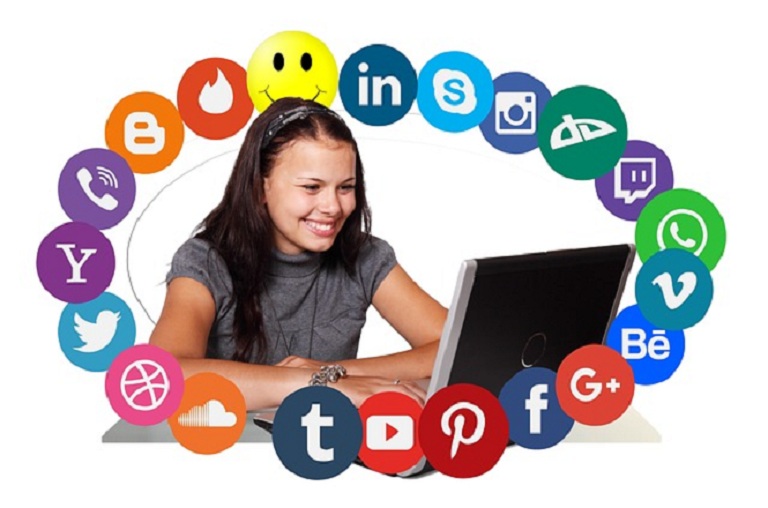More
Vehicle Delivery Services Available for Fleet Management
Published
10 months agoon


As our globalized world continues to expand, the need for comprehensive, efficient, and cost-effective vehicle delivery services has surged, particularly for fleet management companies. Businesses in the modern age are turning to these services for a multitude of reasons, ranging from expanding operations, streamlining inventory, to renewing their fleets. However, choosing the right vehicle delivery service is not a simple task, and fleet managers must consider a range of factors from timing and mode of transport to economies of scale. This article dives into the key reasons behind the rising importance of vehicle delivery services and the major considerations that can help businesses make more informed decisions.
Why Vehicle Delivery Services Matter for Fleet Management
Fleet management is no longer confined to a localized area. With globalization, companies are expanding their fleet operations across various locations, necessitating the need for reliable vehicle delivery services. This reliance stems from the need to synchronize fleet operations, maintain uniform standards, and ensure the timely availability of vehicles at various locations.
The demand for vehicle delivery services is also being driven by the need for fleet renewal. Companies often replace old vehicles with newer models to keep up with the latest safety and efficiency standards. Coordinating these large-scale changes requires efficient vehicle delivery services that can handle the transportation of several vehicles simultaneously without disrupting ongoing operations.
Vehicle delivery services also play a crucial role in situations where a fleet is used for special events, promotional activities, or temporary projects. Having a reliable delivery service ensures that vehicles can be mobilized quickly and efficiently, allowing businesses to take advantage of opportunities as they arise.
In an increasingly competitive environment, vehicle delivery services can provide a competitive advantage by enabling faster scaling. Companies that can rapidly deploy vehicles to new locations have an edge in seizing market opportunities, providing superior customer service, and driving growth.
Vehicle delivery services can be a lifesaver in times of crisis or unexpected demand. Whether it’s a natural disaster that requires an immediate influx of vehicles, or a sudden business opportunity, vehicle delivery services can ensure that fleets are where they need to be, when they need to be.
Factors to Consider When Shipping Your Fleet Vehicles With a Service Provider
Entrusting your fleet’s safe and timely transportation to a vehicle delivery service is a significant decision. Various elements come into play when choosing a provider, and the optimal decision often hinges on an intricate balance between these elements. These factors include the time of the year, the type of transport, shipping practices, the type of provider, and the insurance protection offered.
Consider the Time of Year You Are Shipping Your Vehicles: Plan Ahead When Possible
The time of the year plays a significant role in the vehicle delivery process. Peak seasons, such as summer and early fall, are characterized by high demand and increased rates. Thus, planning ahead during these times is crucial to avoid excessive costs and ensure timely delivery.
In contrast, the winter season, although it presents more logistical challenges due to weather conditions, may offer more competitive rates due to lower demand. However, adverse weather can lead to delays and potential damage, factors that need to be taken into account when planning the transportation of your fleet.
Planning your fleet’s transportation outside of peak season, when possible, can result in considerable cost savings. However, always weigh the potential savings against the possible risks associated with different times of the year, and work closely with your service provider to find the best solution.
Open vs. Enclosed Trailer Transport When Moving Your Fleet Vehicles
The mode of transport used to move your fleet vehicles is another critical consideration. Two of the most common methods are open and enclosed trailer transport. Each option has its benefits and drawbacks, which need to be evaluated based on your fleet’s specific needs.
Open transport is often the most cost-effective option, with the ability to move multiple vehicles at once. However, vehicles are exposed to the elements, which may lead to minor cosmetic damage. If your fleet consists of sturdy vehicles designed for heavy use, the risks associated with open transport might be acceptable.
Enclosed trailer transport, on the other hand, provides a higher level of protection for your vehicles, shielding them from weather and road debris. This method is typically more expensive but could be the right choice if you’re shipping high-value vehicles or those with specialized equipment that requires extra protection.
Consider Bulk Shipping Practices for Greater Savings
Shipping your fleet vehicles in bulk can result in significant cost savings. Service providers often offer discounted rates for larger shipments due to the economies of scale. However, this does require a certain level of coordination and planning to ensure all vehicles are ready for transport at the same time.
While bulk shipping can provide financial advantages, it may also require more flexibility in delivery timelines. Larger shipments may take longer to schedule and execute, and unforeseen delays can have a more significant impact. Therefore, balance the potential savings against the specific needs and timelines of your operation.
Benefits of Working With a Car Shipping Broker vs. Car Shipping Provider
Choosing between working with a car shipping broker and a car shipping provider depends largely on the specific needs of your fleet management. A broker acts as an intermediary, finding the best shipping provider that suits your requirements. They can help navigate the complexities of the industry, potentially saving you time and effort.
However, working directly with a shipping provider offers more control over the process. You can directly communicate your needs, concerns, and expectations. Additionally, working with a provider can sometimes be more cost-effective as you’re cutting out the middleman.
In both cases, the key is to establish a strong line of communication. Whether it’s with a broker or directly with the provider, ensure that your requirements are clearly understood, and that you’re getting the level of service your fleet needs.
According to Montway Auto Transport, one of the vehicle delivery services available to businesses nationwide, “Door-to-door car shipping is the most convenient method of auto transport. You select a specific address for your vehicle to be picked up and dropped off. The truck driver will pick up and drop off your vehicle as close to this desired address as safely and legally possible.”
Vehicles Have Better Insurance Protection When in Transit With a Reputable Provider
Insurance protection is a critical factor when choosing a vehicle delivery service. A reputable provider typically offers comprehensive insurance coverage that protects your vehicles in case of damage or loss during transit.
Moreover, such providers also have stringent safety protocols and employ professional drivers to minimize risks. This means you can have peace of mind knowing that your vehicles are in safe hands. Nonetheless, it’s essential to review the terms of the insurance policy thoroughly to ensure it offers sufficient coverage for your fleet.
Businesses Can Team Together for Greater Car Shipping Savings
It’s no secret that businesses are always looking for ways to reduce costs. When it comes to vehicle delivery, one innovative approach is for businesses to team together. By pooling resources and coordinating shipments, businesses can enjoy substantial savings and efficiencies.
The concept is simple; by increasing the volume of vehicles shipped at one time, businesses can leverage economies of scale to negotiate better rates. This not only reduces costs but also streamlines the delivery process by reducing the number of individual shipments.
Besides financial benefits, collaboration between businesses can also foster better relationships, leading to other potential partnerships and collaborations. In today’s fast-paced and competitive business environment, strong networks can offer significant strategic advantages.
In order to successfully implement this approach, open communication and effective coordination between the involved businesses are essential. By working together towards a common goal, businesses can make the vehicle delivery process more efficient and cost-effective.
However, this approach does require a level of trust and collaboration that might not be feasible for all businesses. It’s important to consider the specific needs, timelines, and requirements of each business involved, and to ensure that the collaboration benefits all parties.
Assessing the Reputation and Reliability of Vehicle Delivery Service Providers
In the vehicle delivery business, reputation and reliability are everything. When entrusting a service provider with the transport of your fleet, you want to be confident that they can deliver on their promises. There are several ways to assess the reputation and reliability of a vehicle delivery service provider.
Look for professional accreditation and membership in industry associations. These often require service providers to adhere to high standards of service and professionalism, giving you confidence in their abilities.
Consider the provider’s experience in the industry. A long track record in the business usually indicates a provider who has been able to consistently meet customer expectations and navigate the complex logistics of vehicle delivery.
Check the company’s customer reviews and ratings. These can provide valuable insights into the experiences of previous customers. Look for a pattern of positive feedback regarding punctuality, condition of the vehicles upon delivery, and overall customer service.
The provider’s responsiveness and transparency can also serve as indicators of reliability. Providers who are quick to respond, open in their communications, and clear about their policies and processes demonstrate a professional approach that can inspire confidence.
Assess the insurance protection the provider offers. Comprehensive insurance coverage indicates that the provider takes their responsibility seriously and is prepared to compensate you for any damage or loss that might occur during transit.
In a world where businesses are expanding across geographical borders and customer expectations are continually rising, effective fleet management is crucial. Vehicle delivery services have emerged as an essential component of this puzzle, offering fleet managers the means to transport vehicles efficiently and cost-effectively. By considering factors like the time of the year, type of transport, shipping practices, type of provider, and insurance protection, fleet managers can choose a vehicle delivery service that best meets their specific needs. With the potential for collaborative shipping and the assurance of working with a reliable provider, businesses can reap both financial and operational benefits, making vehicle delivery services an indispensable tool for successful fleet management.
You may like
More
Brand Evolution: The Role of a Strong Community in Today’s Landscape
Published
2 weeks agoon
April 18, 2024

In the whirlwind of modern business, brand success has shifted beyond marketing muscle and slick products. Today, a brand’s true strength lies in the tapestry it weaves with its community.
This article explores how fostering deep community connections isn’t just a PR win, but a strategic thread in brand evolution, leading to positive societal impact.
Engaging Local Talent: A Win-Win for Brands and Communities
In a time when globalization is the norm, local authenticity and craftsmanship are becoming more and more valued. Employers now have a rare chance to interact with regional artists, craftspeople, and artisans. By doing this, businesses may take advantage of the diverse pool of local talent, giving their goods and services a unique appeal that appeals to the community.
This is more than just a commercial relationship. It’s about creating a supportive network wherein local talent can display their abilities and businesses can become more genuine and establish stronger ties with their target audience. For example, a neighborhood coffee shop that sources its décor from local artists not only enhances the aesthetics of the area but also conveys a compelling narrative to its customers.
Fostering Community Relationships Through Support and Collaboration


Fostering strong relationships with the community through support and collaboration is an essential aspect of modern brand evolution. This approach goes beyond traditional business practices, focusing on creating a symbiotic relationship where both the brand and the community benefit mutually. Engaging in community support and collaboration can take many forms, and each offers unique opportunities for brands to strengthen their ties with the people and organizations around them. One effective way to foster these relationships is through partnerships with local community organizations. Brands can collaborate with schools, non-profits, or local government initiatives to support various projects.
These partnerships might involve sponsoring local events, providing resources for community programs, or even offering expertise and manpower for community development projects. By doing so, brands can play an integral role in addressing local needs, from improving educational facilities to enhancing public spaces, thus directly impacting the quality of life within the community.
Amplifying Brand Image Through Community Endorsements
A happy consumer is a brand’s greatest ambassador. Local communities naturally become brand ambassadors when they gain from a business’s actions, whether it is through partnerships, employment possibilities, or support for neighborhood projects. Positive evaluations and recommendations from neighbors have more weight than any amount of sponsored advertising.
Being involved in the community also makes it easier to communicate real stories. Brands can create content that is not only promotional but also endearing and approachable by sharing stories about their community activities and collaborations. This strategy can greatly improve your branding by gaining consumers’ trust and making it seem more approachable.
Environmental Stewardship: A Commitment to Sustainability


Environmental stewardship is becoming an ever-more-important part of corporate identity in today’s environmentally conscious market. Brands that actively promote environmental sustainability in their communities not only contribute to the creation of a healthy planet but also win over more and more environmentally concerned customers. This commitment can be made in a variety of ways, like by endorsing local environmental projects or integrating energy-saving practices into business processes.
For example, an Indian business might launch or support a campaign to reduce the quantity of plastic waste in surrounding rivers. A business in Australia might start paying more attention to reducing water bills by hiring the best plumbers in Sydney and choosing more affordable resource providers. These programs not only help protect the environment, but also demonstrate the brand’s commitment to sustainability—a quality that consumers are starting to value more and more.
Brands can also participate in educational programs to increase community knowledge of environmental issues. In addition to educating, workshops on energy saving, recycling, and sustainable living techniques foster a sense of camaraderie among participants around common environmental objectives.
Enhancing Digital Engagement and Accessibility in the Community


Improving digital engagement and accessibility is a crucial part of brands’ community involvement roles in today’s digitally-driven society. With technology playing a more and bigger role in daily life, brands are in a great position to close the digital gap and create a more cohesive community. This role is especially important because it fills a critical need in many communities and is in line with current trends. First, companies can fund projects aimed at improving digital accessibility.
This could entail building up community tech hubs where people can access and learn about digital technologies, giving free Wi-Fi in public areas, or supplying technology resources to poor schools. By improving digital access, brands help to ensure that all members of the community, regardless of their economic background, have the opportunity to have their voices heard.
Championing Social Causes and Community Wellbeing
Getting involved in advancing social causes and enhancing community welfare is one of the best ways for brands to make a lasting impression. In today’s socially conscious market, brands are expected to be more than just providers of goods or services; rather, they are seen as vital parts of the communities they serve. Brands can build deeper connections with their customers and the community at large by aligning with social causes and sponsoring them. This engagement can take many forms, such as coordinating or taking part in health awareness campaigns or lending support to regional nonprofits and charities.
For example, to encourage physical fitness and wellbeing, a company could fund neighborhood sports events or collaborate with a nearby health group to offer free health check-ups. Such initiatives not only aid the community but also align the brand with values of health and wellness, which can be particularly appealing to health-conscious consumers.
In conclusion, a brand’s development in the modern world is closely linked to its standing within the community. Developing partnerships, involving local talent, and actively contributing to community welfare are important tactics that can promote mutually beneficial growth for the business and the community. By doing this, brands leave a lasting legacy that transcends financial success in addition to improving their reputation and making significant social contributions. Brands that place a high priority on community involvement are likely to become industry leaders as they negotiate the complexity of contemporary business.


Businesses and individuals are switching to electric vehicles in ever-increasing numbers. Latest figures show there were more than 1 million fully electric cars registered in the UK in February 2024 on top of a further 56,000 electric vans and 620,000 plug-in hybrids.
Now, with a government ban on the sale of all new petrol and diesel cars due to come into force in 2035, more and more businesses and employees will be trading in their polluting fossil-fuel company vehicles for a zero-emissions electric model.
From salary sacrifice schemes to tax benefits, business car insurance specialists, Keith Michaels has weighed up the advantages and disadvantages of driving an electric company vehicle in 2024 and explained what this means for employers and benefit in kind (BiK).
The Pros of EV Company Cars
Owning a company car was once a tax-efficient benefit designed to stimulate the UK car market. That benefit soon became diluted as governments clamped down on benefit-in-kind rules, making company cars less desirable for businesses and employees alike.
The rise in electric cars changed attitudes again thanks to attractive benefit rates for employees and tax deductions for employers aimed at encouraging uptake in EVs, reducing carbon emissions, and helping the government meet its Net Zero target.
With electric vehicle technology constantly improving, it’s no surprise that businesses are now choosing EVs over standard motor options. Not only is this good news for the environment but there’s less maintenance and lower running costs with electric vehicles compared to those powered by combustion engines.
The advantages of EV company cars for both businesses and employees in 2024 include:
Emission-based tax benefits
Businesses may offer employee salary sacrifice schemes in return for an electric company car with zero emissions as it delivers substantial savings through tax benefits. Instead of calculating emissions, tax rates are fixed for all electric company cars, so businesses won’t pay Class 1 National Insurance contributions on the salary given up, but 1A National Insurance on the lower amount of benefit in kind instead.
Unlike other so-called benefits in kind such as mobile phones or health insurance, income tax charges for electric cars aren’t based on foregone wages, but rather a percentage of the car’s list price as defined by HMRC. For fully electric vehicles, the rate is 2% until 2024/25 rising by a further 1% each year until 2027/28 when it will freeze at 5% which remains substantially less than the taxable value of a petrol or diesel car.
VAT savings
Another tax benefit of electric company cars is that employers can recover any VAT incurred for employees who charge vehicles at work or at public charge points. At present, HMRC states that this doesn’t apply to employees who charge their company EV at home, and they are not entitled to recoup any VAT for business use.
Purchase price discounts
Employees who enter an EV salary sacrifice scheme in the workplace can take advantage of potential discounts on the purchase price compared to buying the car outright. Most dealers and manufacturers are crying out for guaranteed buyers for their electric fleets and are likely to entice new customers with significant cost savings and attractive packages.
Zero congestion charges
Any employee driving an electric company car will be exempt from paying congestion charges in the UK where they apply. Similarly, company EV drivers don’t have to pay Clean Air Zone charges which are currently in force in Birmingham, Bristol, Aberdeen, Dundee, Edinburgh, and Glasgow and will soon roll out across other towns and cities. Company EVs are also exempt from London’s ULEZ charges which currently stand at £12.50 per day for vehicles that don’t meet the strict emissions criteria.
The Cons of EV Company Cars
Electric company cars provide many benefits for businesses and employees, but there are also disadvantages to consider. From a reduction in take-home salary to limited vehicle options, the drawbacks to driving a company EV include the following:
Lower take-home salary and pension contributions
While salary sacrifice schemes can be financially beneficial for employees, they also mean a reduction in take-home salary. This is because the cost of the EV is deducted before National Insurance contributions and taxes apply, potentially leaving workers with less money and a smaller budget at the end of each month. Similarly, salary sacrifice schemes can also negatively impact workplace pensions as a reduction in gross salary means lower pension contributions. This could have long-term implications for an employee’s retirement pot and affect their future financial security.
Mortgage and loan challenges
Any reduction in take-home salary resulting from a salary sacrifice scheme could harm an employee’s ability to secure a mortgage and limit their borrowing capacity for loans. Mortgage providers generally base their rules around lending on an employee’s income and monthly expenses. Therefore, a lower take-home salary could be detrimental for employees looking to secure a mortgage or loan or affect the terms of interest they are offered.
Limited electric car selection
Those who enter an electric company car salary sacrifice scheme are unlikely to have an unlimited choice of vehicles. Most employers will have a contract or arrangement with specific manufacturers, giving employees a smaller selection of makes and models of EVs to choose from. Not only that, but some employees may also find they are responsible for the upkeep of their company electric car under the terms and conditions of their salary sacrifice scheme. As a result, the employee could be liable for all servicing, repairs, insurance fees, and ongoing costs which could reduce the financial and tax benefits of a salary sacrifice scheme.
Penalties for early scheme exit
Many EV salary sacrifice schemes offer limited flexibility when employees leave the scheme early or do not meet the pre-agreed terms of the agreement. There are many reasons why this may happen such as workplace changes or new business ownership, but employees are often charged fees or penalties for exiting a scheme early. Also, when an employee changes jobs they may want to transfer their salary sacrifice scheme to their new employer. However, this solely depends on the agreement in place between the employer and the scheme provider and may not always be possible.
Overall, electric company car sacrifice schemes can deliver many benefits for both businesses and employees including tax savings and discounts on purchase prices, lower running and maintenance costs, and zero emission charges. However, EV salary sacrifice schemes can also cause a reduction in take-home salary, penalties for early exits, and limited vehicle choice. Therefore, it is essential to weigh up the pros and cons of any electric company car salary sacrifice scheme to fully understand the obligations and limitations involved with switching from fossil-fuel vehicles to EVs.
More
DeepTech Startup AVGARDE Wins the DRDO Dare to Dream 4.0 Contest for National Level Innovations in Counter Drone Technologies
Published
4 weeks agoon
April 3, 2024

Deeptech startup AVGARDE was declared the winner of the Defence Research and Development Organisation (DRDO) Dare to Dream 4.0 Contest for national level startup innovations in ‘countermeasures for drone and swarm of drones’. Incubated at IISc Bangalore and IIT Guwahati, AVGARDE is building a cutting-edge AI-driven object sensing platform for low-altitude airspace management. Founded in Assam, AVGARDE has offices in Bangalore and Guwahati, with Pan-India operations and associates supporting customers across the country.
The prestigious DRDO Dare to Dream competition provides a unique opportunity for startups and innovators to address key challenges in emerging technologies that can help boost India’s aerospace and defence capabilities, while contributing towards the country’s Science, Technology and Innovation (STI) ecosystem to achieve technological self-reliance.
Manash Bhuyan, Managing Director & Co-Founder of AVGARDE said: “We are honoured and proud to be a winner at DRDO’s coveted innovation contest, Dare to Dream 4.0. This award is a testimony of our globally competitive technology developed by our amazingly talented team. With this recognition, the innovation journey of AVGARDE is further validated as we continue to develop our best-in-class AI-driven airspace management platform for various applications, including drone countermeasures. With the proliferation of drones, the low-altitude airspace is confronted with many potential risks and threats for civilian and military dual-use cases. As we address these new-age challenges, AVGARDE is motivated to develop pioneering indigenous technology and contribute effectively towards a self-reliant India.”
Currently, the AVGARDE DeepSense platform offers three product lines – (1) DroneSafe – an AI-enabled Counter Unmanned Aerial System (C-UAS) to detect, classify, mitigate and report aerial risks/threats from drones, UAVs and other aerial objects; (2) DIWAR – an all-band GPS Jammer for tackling drones and inhibiting its airborne motions; and (3) BirdsEye – an intelligent Bird Detection and Monitoring Radar (BDMR) for dual-use aviation safety and preventing Bird Aircraft Strike Hazard (BASH).
Nilutpal Choudhury, CEO & Co-Founder of AVGARDE said: “This award is a phenomenal milestone for AVGARDE and I have immense admiration and gratitude for our diverse and great team. DRDO’s Dare to Dream is a great platform to validate innovations as it’s a multi-stage screening process with various selection criteria considering aspects of novelty, applicability, implementability, technical merit and maturity. Therefore, it is a great honour to be recognized by DRDO, our country’s esteemed R&D organization for aerospace and defence. Our team is further encouraged to innovate continuously to develop advanced home-grown technologies to fulfill our commitment towards Atmanirbhar Bharat.”
About Avgarde Systems
Avgarde Systems Private Limited (“AVGARDE”) is a radio frequency, wireless technology and artificial intelligence focused deeptech startup building an AI-driven object sensing platform for low-altitude airspace management. With the proliferation of drones, AVGARDE is reimagining wireless technologies to innovate the next generation products for the drone airspace and allied operations, with applications across airports airspace safety, critical infrastructure protection, drone fleet operations, unmanned traffic management, aerospace and defence.
Founded in India as a private limited company, AVGARDE has offices in Bangalore, the world’s fastest growing tech hub, and Guwahati, the gateway to the Northeast – India’s land bridge to Southeast Asia. AVGARDE has incubation and research partnerships with some of India’s top institutions, including Indian Institute of Science (IISc) Bangalore, and Indian Institute of Technology (IIT) Guwahati.
About DRDO – Dare to Dream Innovation Contest
Defence Research & Development Organisation (DRDO) is a premier agency under the Indian Ministry of Defence, which is responsible for the military’s research and development. DRDO technologies have been adopted by the Indian Army, the Indian Navy, the Indian Air Force and others. DRDO also promotes R&D though it’s Technology Development Fund (TDF), which is focused on supporting Micro, Small and Medium Enterprises (MSMEs) and the development of indigenous technologies. To promote startups and innovators, the DRDO Dare to Dream Innovation Contest was launched in honour of Dr. APJ Abdul Kalam, a renowned scientist and former President of India.
The DRDO Dare to Dream Innovation Contest intends to scout and promote individuals and startups for innovations in Defence & Aerospace. With such initiatives, the Defence Research & Development Organisation (DRDO) provides a unique opportunity for startups and innovators to solve some key challenges in emerging technologies that can help boost India’s defence & aerospace capabilities.


A Guide to Help You Find the Best AP Computer Science Tutor


Climate-smart Deeptech Company Ecozen Raises $30 M


BlackSoil’s Investment Grows 40% in FY24; Deploys $118Mn & Clocks 36 New Deals
Saad Kassis Mohamed led WeCare Raises $350000 for Lab-Grown Diamonds
UK-based fintech Nuke From Orbit raises £500k pre-seed funding to deliver smarter smartphone security
Japanese Fintech Leader Smartpay, partners with Chubb Insurance to accelerate digitization of the Japanese Insurance Industry, Anticipated to Surge to 80 Trillion Yen (USD $500 Billion) by 2027
Trending
-



 How to7 years ago
How to7 years agoHow to register a Startup in USA
-
Interview5 years ago
An Interview with Joel Arun Sursas, Head of Clinical Affairs at Biorithm, Singapore
-



 More4 years ago
More4 years ago6 Promising Up and Coming Fashion Companies
-



 More6 years ago
More6 years agoFactors to Consider When Planning Your Office Design and Layout
-



 Interview4 years ago
Interview4 years agoAn Interview with Russell Jack, Southland-based Yogapreneur and Mindfulness Teacher
-



 Other Internet Tech6 years ago
Other Internet Tech6 years agoHow to become an IPTV reseller? A beginner’s guide
-



 More6 years ago
More6 years agoIPTV business for beginners
-



 Business Ideas6 years ago
Business Ideas6 years ago50 Small Business ideas with low investment

